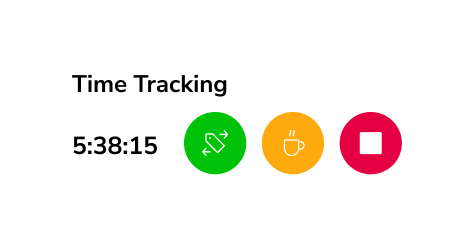
Photo by Kampus Production on Pexels
Background
A top management consulting firm and a leader in Latin American nearshore outsourcing, catering to middle-market and enterprise-level clients in the US.
The company focuses on business transformation, assisting organizations in modernizing and scaling their operations through advanced processes, technologies, and organizational improvements.
With delivery centers, it offers skilled talent, cultural alignment, and operational efficiency across industries such as IT, finance, customer service, HR, and digital transformation.
For confidentiality reasons, the company name is not disclosed.
Challenges with the Old System That Made the Company Change
As a company with a global footprint and employees working remotely or in client locations, a time tracking solution was needed that could meet the specific demands of a dynamic, geographically dispersed workforce. The following challenges prompted the company to seek an advanced solution:
1# Lack of Real-Time Collaboration Features
Collaboration between teams, especially in remote or hybrid environments, was challenging with the old time tracking system. There was no integrated communication or project collaboration tools within the system, making it harder to manage team coordination and track progress on tasks in real time. A modern system with collaboration features and the ability to track project team hours and tasks would help teams stay aligned, improve communication, and ensure that projects are completed on time.
2# Employee Experience and Time-Tracking Fatigue
Employees at the company, particularly those who work across different locations or remotely, found the old time tracking system cumbersome and difficult to use. The process of manually logging hours, tracking breaks, and managing approvals was time-consuming and often led to inconsistencies. A more user-friendly mobile app with features like auto clock-in, automatic break tracking, and simple reporting would make the process more efficient and engaging for employees, leading to more accurate time tracking.
3# Difficulty in Tracking Non-Traditional Work Schedules and Overtime
Many employees at the company, especially those working on client projects, have non-traditional schedules that can include irregular hours or overtime. The old system created difficulties in tracking overtime. A more robust time tracking system with overtime calculations tracking would ensure that employees are paid fairly for their hours.
4# Limited Analytics for Project
With a diverse range of client projects, the company needed to monitor projects and labor utilization more effectively. The old system did not offer the depth of analytics needed to evaluate the time spent of individual projects. A modern system with advanced project analytics and the ability to generate custom reports on time spent would enable the company to optimize time and allocate resources more efficiently.
The Company’s Time Tracking Key Requirements
The company had several critical requirements for a time tracking solution to address the complexities of its operations, ensuring seamless integration and operational efficiency. These key requirements included:
- Real-Time Monitoring – Track hours worked by employees across different projects in real-time.
- Mobile Access – Enable employees to log hours and request time off from their mobile devices.
- Live Location Tracking – Detect clock-in/out based on the employee’s location, ideal for fieldwork.
- Custom Reporting – Generate reports that offer insights into project hours and employee productivity.
- Employee Self-Service – Let employees manage their time records and leave requests via an app.
Why the Company Chose Jibble Time Tracking
When it came time to find a solution to track the team’s time, Jibble stood out as the perfect fit. Here’s why the company decided to integrate it into their workflow:
1# Seamless Time Tracking for Remote Teams:
The company, with a distributed workforce, needed a time tracking solution that allowed employees to easily log their hours, no matter where they were working. Jibble’s mobile app provided an intuitive platform that enabled remote workers to clock in and out effortlessly, ensuring accurate time records for payroll and billing without manual intervention.
2# Real-Time Project Monitoring:
The company required a system that provided managers with live data on how time was being spent across various client projects. Jibble’s real-time tracking feature allowed managers to get instant insights into the allocation of resources, enabling them to make quick adjustments to timelines and resource management, which helped improve client satisfaction and project delivery.
3# Automated Reporting:
The company’s previous system required a significant amount of manual reporting and data entry. With Jibble, the reporting process became automated, and the system seamlessly integrated with the company’s payroll platform, saving time, reducing errors, and ensuring accurate and timely payroll processing.
How Was the Onboarding Process?
The company’s onboarding for Jibble was a bit more intricate, as it involved employees working remotely across various industries, including IT services and consulting. The system was implemented over 6 weeks.
The first two weeks were spent on system configuration, ensuring Jibble could handle the unique requirements of tracking billable hours for different client projects. During the third week, employees were introduced to the system, with training sessions focused on the importance of accurate time logging for client billing.
The next two weeks were dedicated to piloting the system, gathering feedback, and making necessary adjustments based on real-time use. In the final week, the system was fully integrated with their payroll platforms, ensuring a seamless workflow for timesheet management and invoicing. This onboarding process helped the company save time on administrative tasks, allowing them to focus more on client-facing work.
The Benefits Immediately Identified Post Onboarding
Following the onboarding process, the company quickly experienced several key benefits that significantly contributed to its sustainable improvement, including:
1. Optimized Time for Payroll: The company leveraged Jibble’s time tracking to ensure more accurate payroll, improving compensation processes.
2. Seamless Location Tracking: The system allowed for easy time tracking on the go, with automated features, reducing manual effort and improving accuracy.
3. Improved Transparency: Detailed time tracking allowed the company with real-time project updates and precise productivity insights.
4. Increased Employee Compliance: The easy-to-use mobile app increased employee adoption and compliance with accurate time logging.
Main Method of Jibbling In and Out
The key methods for clocking in for the Company is through:
- Mobile App: The company employees use the Jibble mobile app to clock in and out, especially those working remotely or on client sites.
- Others: The flexibility to clock in/out directly from their smartphones or desktops, along with live location, enhances the accuracy of time records, which is crucial for their consulting business.
Conclusion
The management consulting firm faced several challenges with its old time tracking system, such as difficulty managing remote teams, tracking billable hours, and tracking time with locations. The company chose Jibble for its real-time project monitoring, mobile access, live location tracking features, and seamless payroll integration.
The onboarding process, which took 6 weeks, involved configuring the system for accurate payroll and training employees on time logging.
Post-onboarding, the company experienced benefits like optimized hour logins, improved team transparency, and reduced administrative workload, ultimately enhancing project delivery and profitability.


